Life
Sign up for our newsletter
We summarize the week's scientific breakthroughs every Thursday.
-
 Humans
HumansHumans’ maternal ancestors may have arisen 200,000 years ago in southern Africa
New DNA findings on humankind’s maternal roots don’t offer a complete picture of how and when Homo sapiens emerged.
By Bruce Bower -
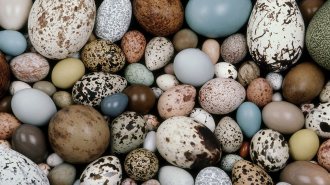 Life
LifeBird eggs laid in cold climates are darker, which may keep eggs warm
A global survey of bird egg color reveals a simple trend: the colder the climate, the darker the egg.
-
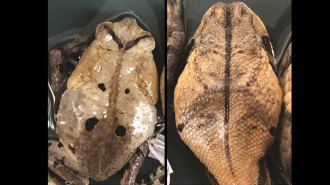 Animals
AnimalsCongolese giant toads may mimic venomous snakes to trick predators
If Congolese giant toads mimic venomous Gaboon vipers, it would be the first reported case of a toad imitating a snake.
-
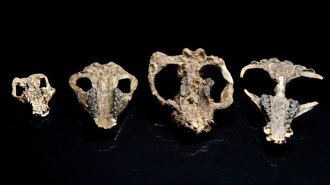 Life
LifeRemarkable fossils capture mammals’ recovery after the dino-killing asteroid
A fossil-rich site in Colorado is revealing how mammals rebounded and flourished after an asteroid strike 66 million years ago.
-
 Neuroscience
NeuroscienceLab-grown organoids are more stressed-out than actual brain cells
Compared with real brain tissue, organoids show big differences.
-
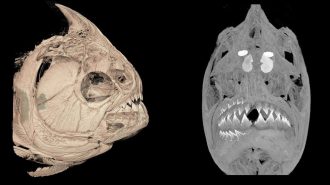 Life
LifePiranhas and their plant-eating relatives, pacus, replace rows of teeth all at once
Piranhas and pacus both lose and replace all teeth on one side of their mouths in one go, which may help to distribute wear and tear.
-
 Health & Medicine
Health & MedicineAlgae inside blood vessels could act as oxygen factories
Two types of light-responsive algae make oxygen inside tadpoles’ blood vessels.
-
 Life
LifeAye-ayes just got weirder with the discovery of a tiny, sixth ‘finger’
Aye-ayes have a sixth “finger,” or pseudothumb, that may compensate for other, overspecialized fingers by helping the lemurs grip things.
By Sofie Bates -
 Neuroscience
NeuroscienceLight from outside the brain can turn on nerve cells in monkey brains
An extra-sensitive light-responsive molecule allowed nerve cells to be switched on or off with dim light.
-
 Neuroscience
NeuroscienceAlzheimer’s may scramble metabolism’s connection to sleep
Mice designed to have brain changes that mimic Alzheimer’s disease have altered reactions to blood sugar changes.
-
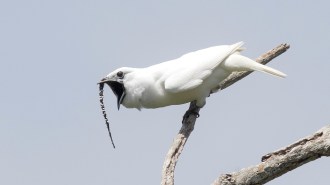 Animals
AnimalsWhite bellbirds have the loudest known mating call of any bird
White bellbirds have the loudest mating call, according to scientists who compared the songs of bellbirds and screaming pihas in the Brazilian Amazon.
By Sofie Bates -
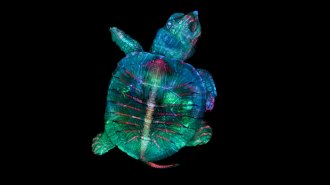 Life
LifeA peek inside a turtle embryo wins the Nikon Small World photography contest
The annual competition highlights the wonders to be found when scientists and photographers zoom in on the world around us.